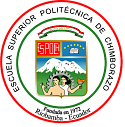Text encryption using chaotic attractors: Cryptoguard
DOI:
https://doi.org/10.47187/perspectivas.6.1.213Keywords:
Cifrado de texto, Atractores caóticos, Seguridad web, Cifrado simétrico, Sistemas dinámicos caóticosAbstract
The present study embarks on the exploration of cryptography based on chaotic attractors, developing a web application intended for the encryption and decryption of text strings using the synchronization of these attractors. The first step of this study involved a detailed review of four chaotic systems to fully understand the formulas of each attractor. Through a combination of mathematical analysis and programming, synchronization of Seach attractor was implemented in the web application, using the SCRUMBAN methodology, a combination of the agile frameworks Scrum and Kanban.
Kruskal-Wallis tests, a non-parametric statistical test used to compare three or more independent sets of data, revealed significant differences in synchronization, encryption, and decryption times between the four attractors. In concrete terms, these results suggest that at least one of the attractors studied offers substantially different performance from the others.
Métricas
References
J. Cordova Ramirez, H. Vega Huerta, C. Rodriguez Rodriguez, y F. Escobedo Bailón, «Firma digital basada en criptografía asimétrica para generación de historial clínico», 3C Tecnol. Innov. Apl. Pyme, pp.
-85, dic. 2020, doi: 10.17993/3ctecno/2020.v9n4e36.65-85.
A. Sheikholeslam, «A chaos based encryption method using dynamical systems with strange attractors»:, en Proceedings of the International Conference on Security and Cryptography, Milan, Italy: SciTePress - Science and and Technology Publications, 2009, pp. 259-265. doi: 10.5220/0002105402590265.
O. S. Gómez, R. Rosero Miranda, J. EstradaGutiérrez, y M. Jiménez-Rodríguez, «An Approach for Securing JSON Objects through Chaotic Synchronization», Cybern. Inf. Technol., vol. 22, pp. 23-34, dic. 2022, doi: 10.2478/cait-2022-0037.
C. E. R. Montalván, «Desarrollo de un mecanismo de cifrado basado en el algoritmo criptográfico simétrico
aes», p. 139, 2019.
R. Ribero Medina y M. Ramirez Gómez, «Caos: Definición, Detección y Ejemplos», 1992, doi: https://revistas.uniandes.edu.co/doi/pdf/10.13043/dy s.30.7.
O. Lombardi, «La teoría del caos y el problema del determinismo», p. 22, 2020.
J. Zaqueros-Martínez, G. Rodríguez-Gómez, E. Tlelo-Cuatle, y F. Orihuela-Espina, «Sincronización
de sistemas caóticos fraccionarios», p. 73, 2020.
J. C. P. Campuzano, «Strange Attractors», Strange Attractors. Accedido: 12 de enero de 2023. [En línea]. Disponible en: https://jcponce.github.io/
E. Pacheco Cruz, «Atarctor de Lorenz y Rossler | PDF | Teoría del caos | Atractor», Scribd. Accedido: 30 de
diciembre de 2022. [En línea]. Disponible en:
https://es.scribd.com/document/398824115/Atarctorde-Lorenz-y-Rossler
C. A. Ibanez, «Identificacio´n del sistema de Ro¨ssler: enfoque algebraico y algoritmos
gene´ticos», 2005.
G. Chen y T. Ueta, «Yet Another Chaotic Attractor», Int. J. Bifurc. Chaos - IJBC, vol. 9, pp. 1465-1466,
jul. 1999, doi: 10.1142/S0218127499001024.
G. Paredes, «Los Flujos Caóticos Más Simples (FCMS) Un mito entre lo complejo y lo complicado».
[En línea]. Disponible en:
http://casanchi.org/mat/flujoscaoticos01.pdf
Q. Lai y S. Chen, «Generating Multiple Chaotic Attractors from Sprott B System», Int. J. Bifurc.
Chaos, vol. 26, p. 1650177, oct. 2016, doi:
1142/S0218127416501777.
Downloads
Published
How to Cite
Issue
Section
License
Copyright (c) 2024 Jemmy Anahí Puzma Granda, Danilo Mauricio Pástor Ramírez, Raúl Hernán Rosero Miranda, Maricela Jiménez Rodríguez, Omar S. Gómez

This work is licensed under a Creative Commons Attribution 4.0 International License.
Copyright
The authors of the manuscripts will retain their copyright on their articles published in Pespectivas Journal. These rights allow the authors to present their manuscripts in public, prepare derivative works, reproduce them physically by printing and distribute them on their social or research networks. These rights will remain unchanged as long as the authors respect the publication and free access policy of Perspectivas Journal.
Publication Rights
Perspectivas Journal reserves all first publication rights on each of the articles that the authors have sent to its review and publication process. It implies that authors will only exercise their copyright if they state the source and origin of the publication correctly, mainly when they distribute, share, present, or use their articles' total or partial content.














